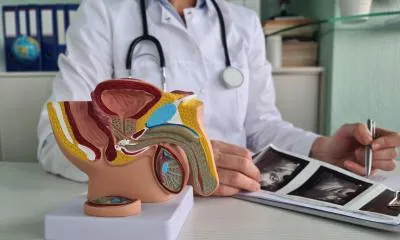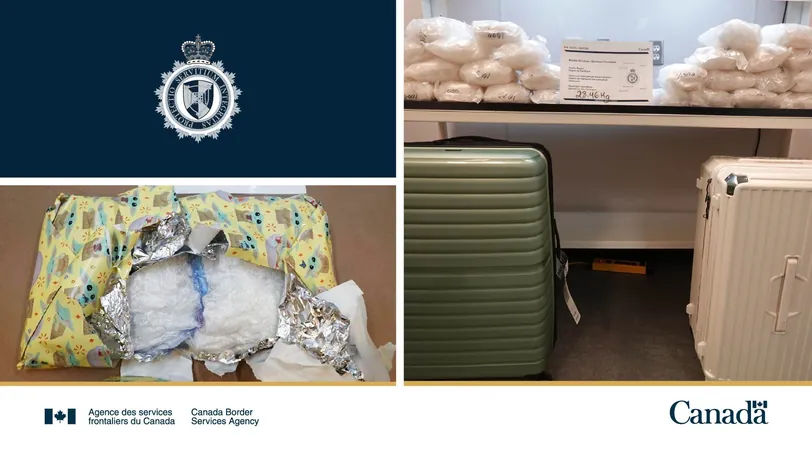
Micro-Ultrasound: A Game-Changer for Prostate Cancer Diagnosis
2025-03-28
Author: Liam
Introduction
In a groundbreaking development for prostate cancer diagnosis, the OPTIMUM trial has emerged as the first randomized study comparing micro-ultrasound (microUS) guided biopsy to the more commonly used MRI-guided biopsy. This extensive trial involved 677 men across 19 hospitals in Canada, the USA, and Europe, and the results are reshaping the landscape of prostate cancer detection.
Trial Structure
Participants in the trial were divided into three groups: half received MRI-guided biopsies, a third underwent microUS-guided biopsies followed by MRI-guided biopsies, and the remaining men had microUS-guided biopsies alone. Remarkably, the effectiveness of microUS in identifying prostate cancer was comparable to that of MRI-guided biopsies, with negligible differences in cancer detection rates across all groups.
Current Prostate Cancer Biopsy Practices
Currently, over a million prostate cancer biopsies are performed annually in Europe, a similar figure in the USA, and about 100,000 in Canada. Traditionally, the MRI-guided biopsy process involves two steps: an MRI scan followed by an ultrasound-guided biopsy, resulting in multiple hospital visits and the need for specialized interpretation of MRI images. This multi-step method can be time-consuming and costly.
Advantages of Micro-Ultrasound
However, microUS presents numerous advantages. There’s no associated toxicity, no patient exclusions, and it is significantly cheaper and more accessible than MRI. It also allows urologists to utilize MRI scans for essential procedures like hip and knee imaging, thus alleviating some of the pressure on healthcare resources.
Expert Insights
Laurence Klotz, Professor of Surgery at the University of Toronto and lead investigator of the OPTIMUM trial, described the findings as potentially transformative. He noted, "When MRI first emerged, it changed the way we accurately image prostate cancer for targeted biopsies. But MRI has its limitations: it’s expensive, often hard to access quickly, and requires experienced operators. MicroUS can now match MRI in diagnostic accuracy, paving the way for a more streamlined ‘one-stop shop’ where patients can be scanned and biopsied on the same visit."
Study Recognition
Professor Jochen Walz, an expert in urological imaging based at the Institut Paoli-Calmettes Cancer Center in France, praised the study, calling it "well-conducted and exciting." He highlighted that microUS simplifies the biopsy process and minimizes potential errors associated with the merging of MRI and ultrasound data. Although training is necessary to interpret microUS images correctly, once mastered, it could significantly enhance prostate cancer diagnosis—especially in resource-limited healthcare settings where MRI technology is scarce.
Broader Implications
Moreover, the implications of micro-ultrasound reach beyond mere diagnosis. Given its lower cost and ease of use, microUS could become an integral component of prostate cancer screening programs. Further research will be required to fully understand its potential in broader applications.
Conclusion
The OPTIMUM trial was sponsored by Exact Imaging, a Canadian company specializing in microUS technology, underscoring the collaborative efforts within the medical community to advance cancer diagnostics. This revolutionary approach not only promises to expedite prostate cancer diagnosis but also has the potential to democratize access to life-saving screenings, making it a significant step forward in the fight against one of the world's leading cancers.









 Brasil (PT)
Brasil (PT)
 Canada (EN)
Canada (EN)
 Chile (ES)
Chile (ES)
 Česko (CS)
Česko (CS)
 대한민국 (KO)
대한민국 (KO)
 España (ES)
España (ES)
 France (FR)
France (FR)
 Hong Kong (EN)
Hong Kong (EN)
 Italia (IT)
Italia (IT)
 日本 (JA)
日本 (JA)
 Magyarország (HU)
Magyarország (HU)
 Norge (NO)
Norge (NO)
 Polska (PL)
Polska (PL)
 Schweiz (DE)
Schweiz (DE)
 Singapore (EN)
Singapore (EN)
 Sverige (SV)
Sverige (SV)
 Suomi (FI)
Suomi (FI)
 Türkiye (TR)
Türkiye (TR)
 الإمارات العربية المتحدة (AR)
الإمارات العربية المتحدة (AR)